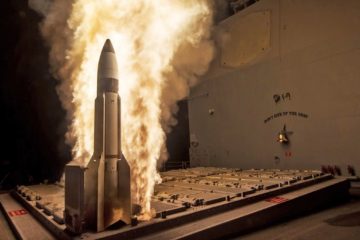The UK carrier strike group of HMS Queen Elizabeth and the ROK amphibious ship Dokdo along with an Aegis destroyer and submarines participated into the exercise for the first time in the history of their bilateral relations, even though it is the third time that a UK aircraft carrier visits South Korea since last visits of light aircraft carriers, HMS Invincible in 1992 and HMS Illustrious in 1997.
The exercise focused on SAREX which was mainly about humanitarian search and rescue and maritime replenishment and supply at sea. The carrier strike group (CSG21) was comprised of 8 ships which are 2 destroyers, 2 frigates, 2 support ships and 1 submarine, including a ship from the US and Royal Netherlands Navies respectively.
During the SAREX, HMS Queen Elizabeth that carries 8 British F-35Bs and 10 American F-35Bs and helicopters demonstrated landings and take-offs. However, it was reported that the US and other countries did not join the ROK-UK exercise.
“The UK Carrier Strike Group 21 led by HMS Queen Elizabeth begins multi-dimensional exchanges with the ROK Navy in Korean territorial waters as of today. The CSG21 will closely cooperate with the Korean Navy to test interoperability and share exemplary models.”
Statement by the embassy of the United Kingdom in Seoul
The ROK Navy seeks to possess a 30,000t light aircraft carrier, but it has faced criticism from the public regarding its capabilities. It was why the Korean Navy spared some time to take a tour at the British carrier, since the Navy was unable to promote the necessity of its indigenous aircraft carrier by taking advantage of the CSG21’s visit to Korea because of COVID-19. A well-informed military source told the media that “Since the Navy plans to carry Vertical Landing and Take-off (VTOL) aircrafts on its CVX, this exercise will be a good opportunity for us to learn structure, automated systems of the British carrier and how F-35Bs are operated there.”

Aside from the ROK’s obsession with CVX, there have been analyses that the UK dispatching its CSG21 intends to be integrated into the US-led anti-China circle as a key ally, bandwagoning to the US grand strategy in response to the rise of the People’s Liberation Army – Navy (PLAN)’s influence in the Indo-Pacific and in order to show off influence that might diminish after Brexit. The North Korean Ministry of Foreign Affairs reacted furiously by releasing a statement on its website saying, “It is no doubt that the UK’s attempt to find the cause of regional tensions from us is provocative and contradictory in the sense that it is the UK sending warships to this far Asia-Pacific”. In response to this, the UK Ministry of Defence countered that “the UK is ready to work with friends and partners to strengthen the security and freedoms upon which we mutually depend”.
The UK came to kill two birds with one stone in terms of national interests. First of all, it can now publicly show the solidarity between allies such as the US, Japan, and South Korea through combined naval exercises targeting the Chinese PLAN that pursues maritime expansion towards the Pacific. Also, the UK used this opportunity to solidify its stance that favors the multilateral bond with liberal democratic states that share common values regardless of distance between Europe and Asia. The UK government even announced a new security policy last March that it will prioritize the Indo-Pacific region by cooperating with like-minded states to counteract against China’s provocations near the South and East China Seas.
Secondly, the UK can expect more cooperation and benefits in its defense industry, considering that the government and British companies promote their carriers’ combat system and air control capabilities to South Korea, which come from BAE Systems, while attempting to export relevant aircraft carrier technologies for the Korean CVX project.
The ROK Defense Minister Seo Wook and the UK Defence Minister Ben Wallace clarified in the bilateral talk that “The deployment of HMS Queen Elizabeth will be the largest sea and air forces maneuvering far from the UK in thirty years. HMS Tamar and HMS Spey will be deployed at all time after our aircraft carrier comes back to the UK.”
“Profound thanks to Commander UK CSG and all on HMS Queen Elizabeth for hosting superbly informative visit for key partners from South Korea’s National Assembly and ROK Navy (whose support has been top-class).”
UK Ambassador to South Korea Simon Smith






